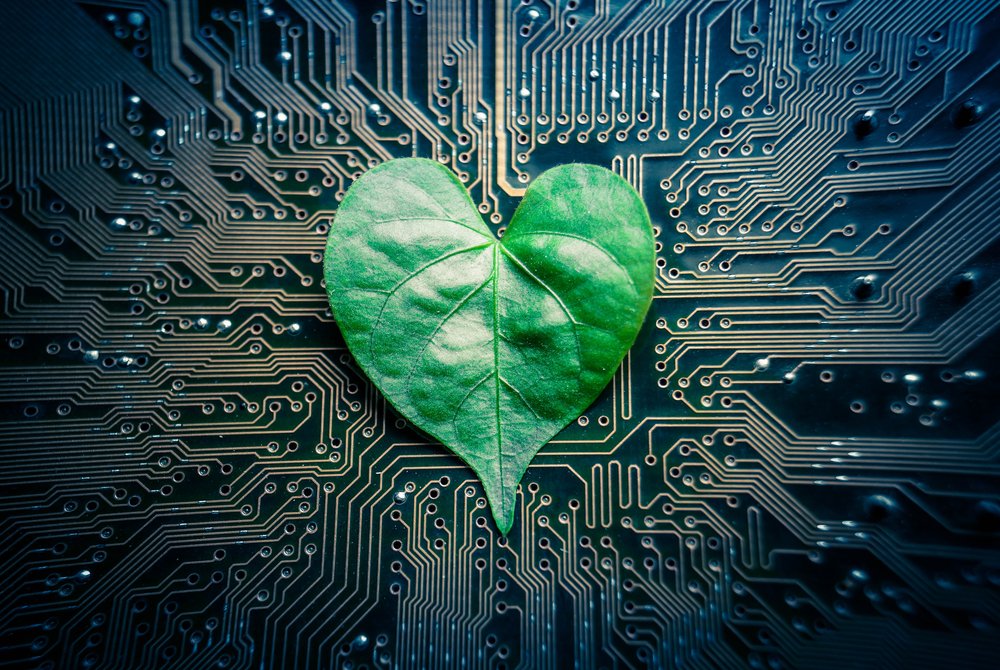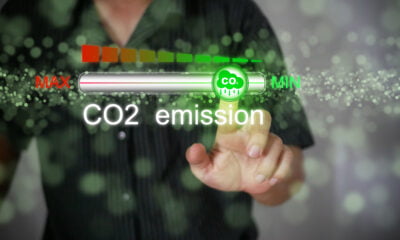

Features
Tips for Setting Up Your New Computer as a Green Consumer
There are many things that you need to do if you want to be an eco-friendly consumer. We have talked about the importance of investing in renewable energy, reducing plastic consumption and minimizing the amount of time that you drive to lower your carbon footprint.
However, one factor that does not get as much attention is the importance of making sustainable decisions when purchasing computers and other electronics. It is necessary to make sure that any computers that you purchase are made with eco-friendly materials and are designed to be as energy efficient as possible. You may be surprised to hear that the carbon footprint of computers is around 778 KG of emissions. You also need to make sure that you setup your computer to operate optimally and be as sustainable as possible.
What Should You Do When Looking for an Eco-Friendly Computer?
Some modern technology products may not be eco-friendly or socially responsible. But that doesn’t mean you have to compromise your values to own a laptop or smartphone. Just do more research to find a sustainable computer. Yes, you can have a sustainable relationship with modern technology.
The right computer can meet your Earth-conscious preferences and provide an excellent user experience. Read this computer buying guide for environmentally conscious consumers to learn more.
Unboxing a new computer is a moment brimming with excitement and promise. That whirring piece of technology holds within its circuits the power to elevate your productivity, streamline your workflow, and transform your digital world with enhanced speed, stunning graphics, and an array of advanced features. It doesn’t have to harm the planet in the process.
But, along with the thrill of shiny new tech comes the daunting prospect of transitioning from the familiar terrain of your old system to the uncharted territories of the new. Thoughts of vital data lost in transit, settings have gone awry, and a maze of new features to navigate can cloud the sunniest tech-upgrade day.
The process of switching to a new computer need not be a cause for anxiety with a well-planned strategy to follow. It can be an adventure, a smooth and rewarding journey from the old to the new, with all your digital treasures safely carried forward and your user experience enhanced. You can also make sure that you choose the right type of computer to avoid increasing your carbon footprint.
This article presents a roadmap of top tips to switch to a new computer safely and successfully, designed to make your transition eco-friendly, painless and enjoyable.
What to Look for When Buying an Eco-Friendly Computer
An ideal laptop for conscious consumers should score well in certain areas. These areas include reducing toxic materials and having a conflict minerals policy. Electronics are often made with toxic materials, such as lead and phthalates. Conflict materials, as defined by the SEC, are sourced from Central Africa where working conditions are poor. These materials are collected through forced labor.
You should also make sure that the computer is ENERGY STAR certified. This certification indicates that the computer is designed to be energy efficient and good for the environment. You can learn more about this certification here.
Computers come in different forms and functions. They range from tablets to desktop computers. The boundaries between them are becoming less clear. You can now find small desktop computers and powerful laptops. There are also laptops that can be used as tablets and all-in-one desktops. To choose the right computer for your needs, check out our buying guidance. Look for computers with the ENERGY STAR label to save energy and protect the climate. These computers are certified to be energy efficient and use 25% – 40% less energy than conventional models. They achieve this by using efficient components and managing energy use when idle.
Back Up Before You Move
One of the fundamental steps in transitioning to a new computer is ensuring all your valuable data is backed up. These are some of the ways you can complete this task.
- External Hard Drive: Transferring your files to an external hard drive is a straightforward, manual process. This method offers you control over what gets moved and the flexibility to access the data without internet access. For those with a Mac, you could look into how to clone a MacBook Pro hard drive to back up your data.
- Cloud Services: Cloud services such as Google Drive, Dropbox, or iCloud provide a more automated process. By syncing your files to the cloud, you can conveniently access them from any device.
- Built-in Backup Tools: Windows and MacOS have built-in tools (File History for Windows and Time Machine for MacOS) that automatically back up your files to an external hard drive or network location.
Of course, you should be prepared for the unexpected. As such, it is always wise to keep multiple backups in case one fails. This way, you don’t have to endure the stress of losing crucial files.
Transferring Your Data
After backing up your data, the next step is transferring it to your new computer. You can choose a complete transfer, which duplicates your entire system, or a selective transfer, which allows you to pick and choose which files and applications you want on your new system.
- Complete Transfer: Fortunately, in today’s technological era, you can use tools to copy your entire system from your old computer to the new one. This helps to make the process of transferring files far easier.
- Selective Transfer: If you want to start fresh and only bring specific files or applications over, you can manually move them from your backup or download them from the cloud. Of course, this will take longer than using tools to help with transferring. However, this method allows you to declutter what files you keep. It lets you free up space on your new computer and only store the needed files.
Setting Up Your New System
The next step after getting all of your files and applications into place is configuring your new system to mirror your preferred settings. Those that work from home want to ensure that your computer has the systems you need that will enable you to be productive at work. Having them set up and ready to go will allow you to get seamless carry-on working using your new computer.
- System Settings: Start with adjusting your system settings. This includes your display preferences, keyboard and mouse, and power settings.
- Software And Applications: Next, install and update your preferred software and applications. Make sure to transfer any license keys you might need for paid software.
- Internet And Email: Set up your internet connection and configure your email accounts. If you use a browser-based email system like Gmail, this step is as simple as logging in on your new computer.
Security First
Embarking on a journey with a new computer also means fortifying your defenses from the outset. Protecting your computer from malicious cyberattacks is a must, especially as it will keep your data and any work-related information safe. With a worry about cybercrime against small businesses, a person can never be too safe with protecting their devices. To protect your computer, you could try implementing the following:
- Install Anti-Virus Software: Choose reliable software to safeguard your new computer from potential malware and cyber threats.
- Password Protect: Create strong, unique passwords for your user account and other sensitive applications. A robust password is your first line of defense against unauthorized access.
You also need to recognize that computer security is important for sustainability. We covered that topic in this post, where we emphasized that the United Nations talked about the importance of prioritizing cybersecurity as an ESG issue.
Use the Right Disposal Methods for Your Old Computer
You also need to recognize that it is important to properly dispose of your last computer before setting up your new one. The e-waste problem is a serious issue that is harming the planet.
Get Comfortable
Lastly, give yourself time to acclimate to your new system and reward yourself for doing everything possible to make it eco-friendly! If you’ve switched operating systems, there might be a learning curve as you get used to new ways of doing things. Use this as an opportunity to explore your new computer’s new features and capabilities. With some patience and practice, you’ll soon navigate your new system like a pro.
Make Sustainability a Priority When Setting Up a New Computer
There are a lot of things that you need to take into consideration when you are trying to be an eco-friendly consumer. One of the most important things that you need to do is make sure that you are going to by the most sustainable computer possible and set it up correctly. this is going to do more good than you expect, since computers have a huge negative effect on the environment.






























